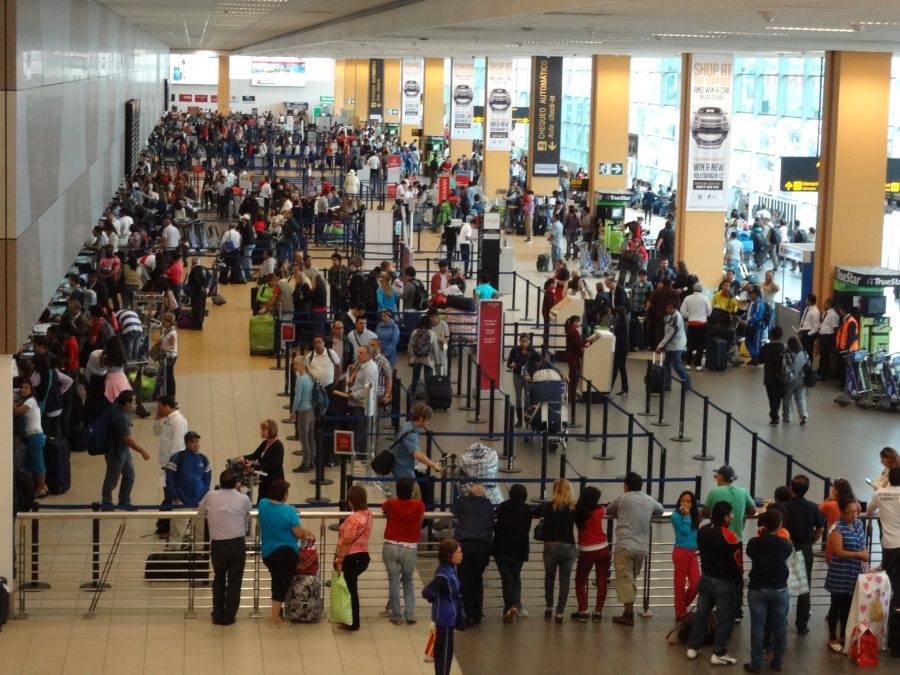Peru’s New $2 Billion Airport Faces Chaos: No Highway, No Metro, and Growing Concerns
With flights set to begin in just weeks, Jorge Chávez International Airport's expansion is plagued by infrastructure delays, political instability, and safety risks for travelers and workers.

Watan-The fear of arriving late for a flight is a feeling that resonates with people worldwide. However, this risk may be inevitable at the new airport in Peru’s capital.
A highway that was supposed to transport travelers to the $2 billion terminal has not yet been built, even though flights are scheduled to start in just seven weeks. Additionally, a bridge to cross a river stretching along the airport’s land has not been constructed.
A metro station named “Airport” is planned for Lima’s new metro system, but it is set to be built three years from now—near the old airport that will soon be decommissioned.
“Having a metro station named ‘Airport’ where there will no longer be an airport is just the clearest example of our lack of planning as a nation,” said Carlos Gutierrez, president of Peru’s Aviation Industry Association.
Such massive oversights at Jorge Chávez International Airport are painful consequences of Peru’s relentless political turmoil. The country’s tendency to impeach and imprison presidents—resulting in a revolving door of governments that has produced 24 different transport ministers since 2001—has taken a toll on what was once a prosperous nation, historically seen as a beacon of stability compared to its more turbulent Latin American neighbors.
An Overcrowded Airport and the Need for a New One
The current airport—ranked as the sixth busiest in the region—is operating at maximum capacity, having handled 24 million passengers last year, nearly double its intended limit. The new airport is designed to accommodate 30 million passengers, with the potential to expand to 60 million.

A History of Delays and Political Interference
Authorities have been sounding the alarm about the need for a new airport for decades. Plans for a new terminal, just west of the current site, were finalized in 2018 by the German company Fraport AG, which operates the airport through its local subsidiary, Lima Airport Partners (LAP). But since then, Peru has had seven different presidents, and each change in leadership has derailed the project.
“If one wants to cite an example of the cost the country bears due to political instability, high turnover in public office, and corruption, this would be it,” said Paola Lazarte, a former transport minister who left office in September 2023 after just nine months in the role.
The new airport—technically located in the municipality of Callao, adjacent to Lima—is set to open on March 30. In a desperate effort to make it functional, the Peruvian government has created a separate entrance away from the intended highway route and installed two prefabricated emergency bridges—normally used for natural disasters—to cross the Rímac River.
Challenges for 17,000 Airport Workers
The temporary bridges will allow private cars to reach the terminal via congested side streets, but there is currently no regular bus service and no pedestrian walkways. This presents a major issue for the airport’s 17,000 workers, most of whom rely on public transportation to reach their jobs. Officials are also concerned about passenger safety, as travelers may be forced to navigate through crime-ridden streets surrounding the airport.
Behind the scenes, government authorities and LAP officials are blaming each other for the situation. LAP argues that the infrastructure within the airport grounds was completed as originally planned, while the government delayed securing the necessary land for over a decade. A particularly embarrassing mistake involved the installation of a new air traffic control tower with windows that caused double-vision effects for controllers, though this was later corrected.
For its part, the government has not provided a comprehensive explanation of what went wrong, instead blaming previous administrations.

Metro Line Completion Expected in 2028
Transport Minister Raúl Pérez Reyes, who has held the position for 16 months, declined interview requests. He stated that the new airport would be the best in South America and added that the metro station named “Airport” would be renamed to avoid confusion. He also pledged to deploy hundreds of police officers to patrol the area around the new terminal to ensure public safety.
The latest estimates indicate that the metro line will be completed by 2028, although there are no concrete plans to extend it to the new airport. The company overseeing the metro project has expressed no interest in bidding on such an extension. Meanwhile, the long-delayed airport highway, which faced years of setbacks due to land expropriation issues, is now expected to be ready in three years and will include a bridge.
Bryan Castillo, founder of the Callao Architects Association, which also advocates for the neighborhood, believes the botched airport project highlights a broader lack of foresight among government officials. He fears the new highway will act as an unsightly divider in the area and suspects it was designed to shield wealthier travelers from the surrounding neighborhoods.
“This is all humiliating and shameful. Only now are we realizing how crucial urban planning really is,” Castillo said in an interview.




